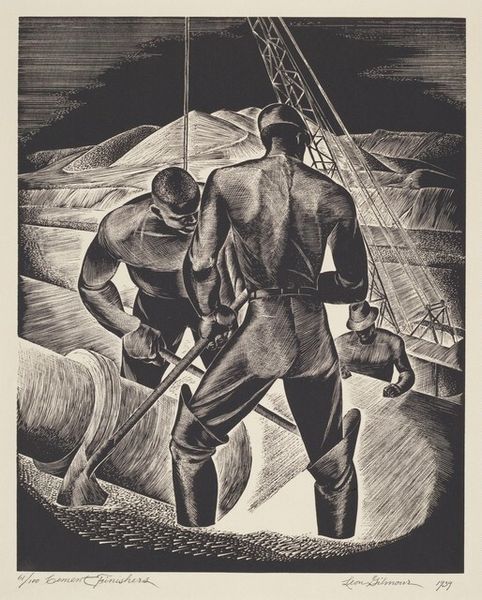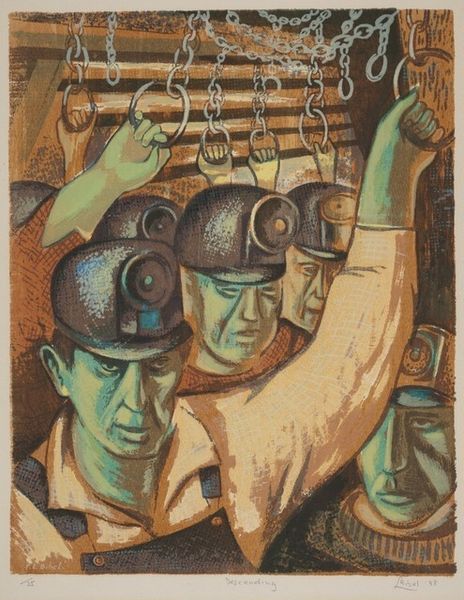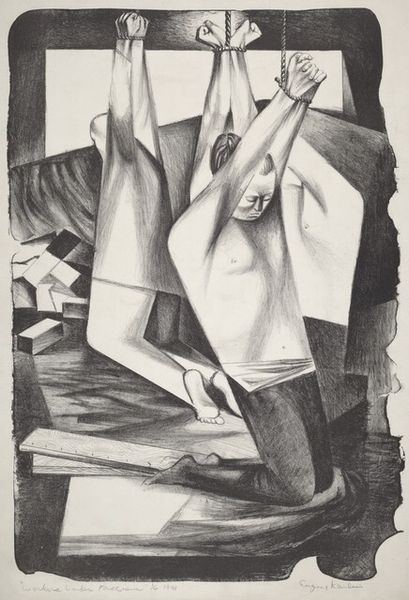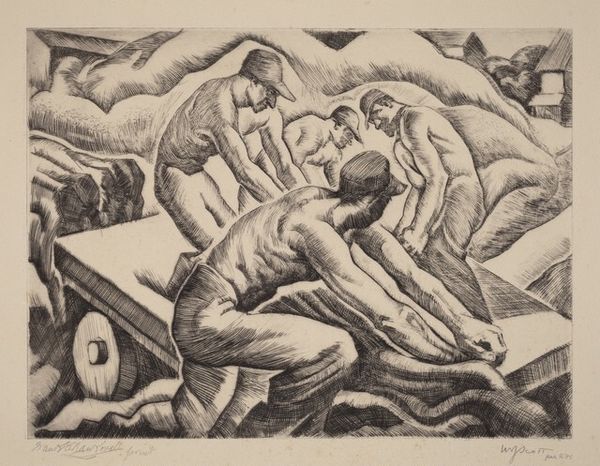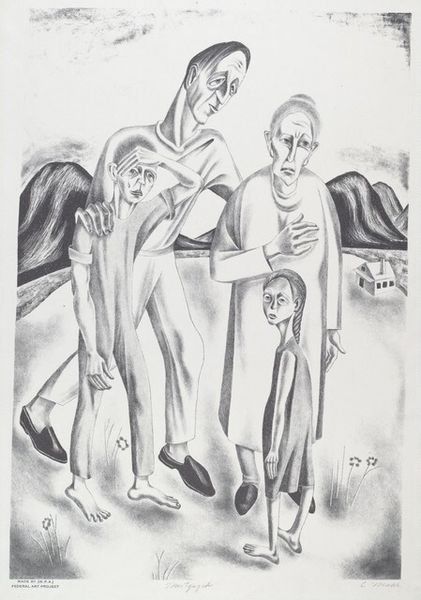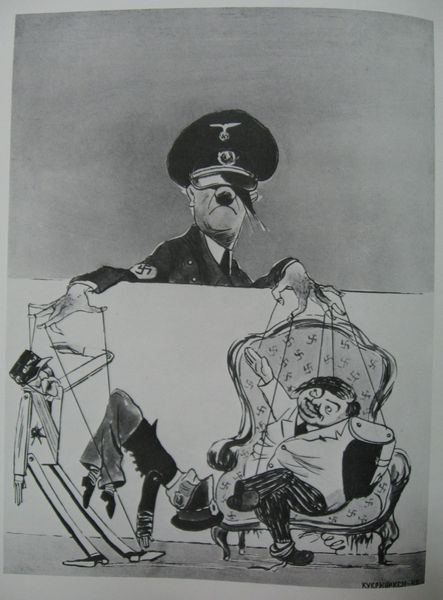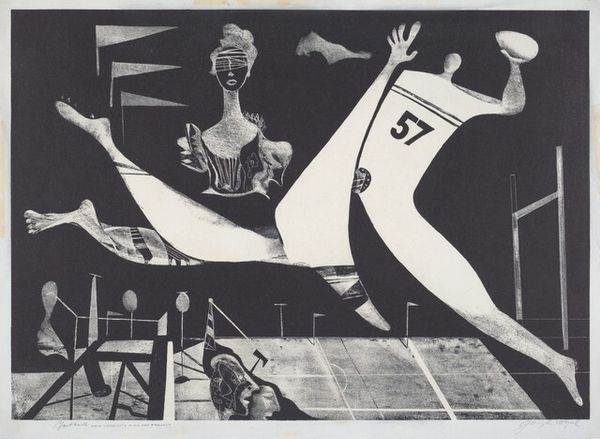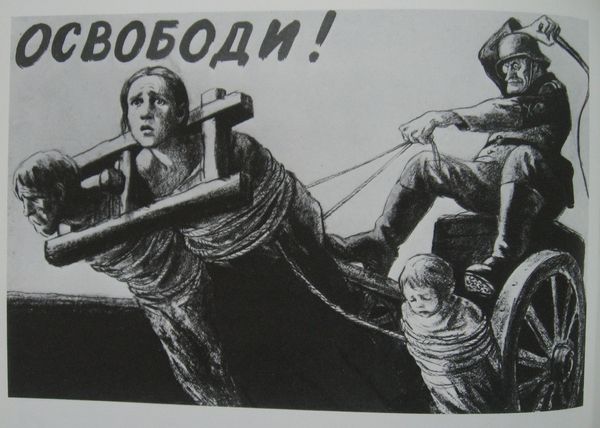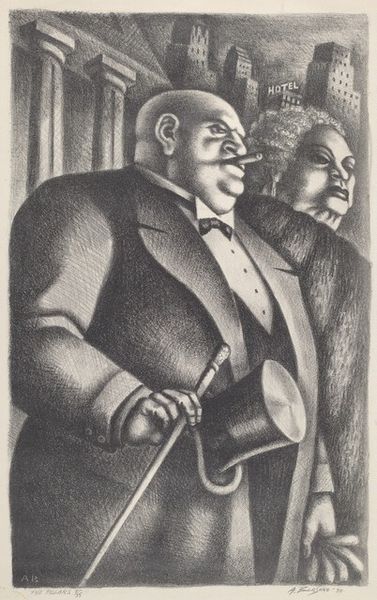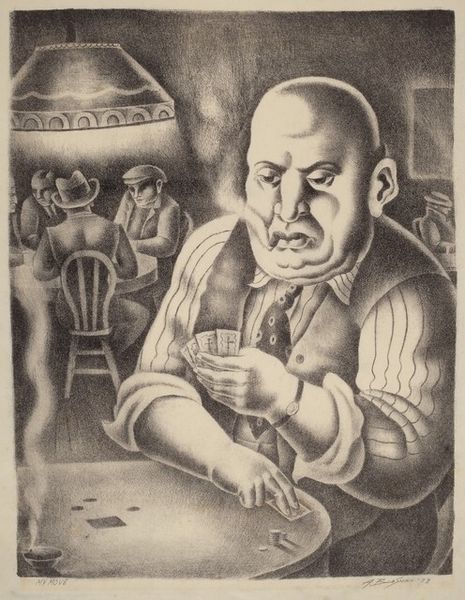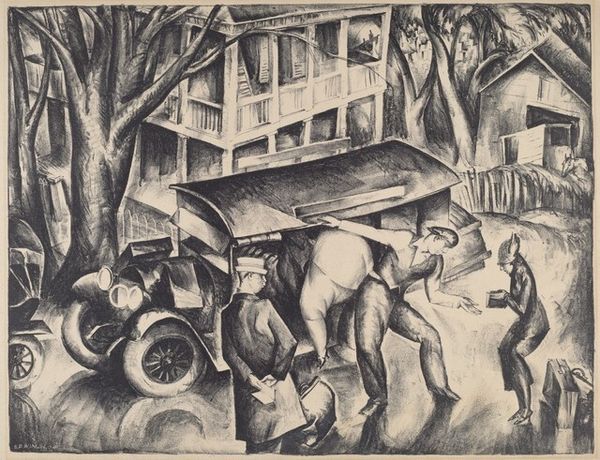
drawing, print, pencil, graphite
#
portrait
#
drawing
#
narrative-art
# print
#
caricature
#
social-realism
#
pencil
#
graphite
#
cityscape
#
portrait drawing
#
realism
Dimensions: Image: 380 x 260 mm Sheet: 480 x 317 mm
Copyright: National Gallery of Art: CC0 1.0
Curator: Claire Mahl Moore's graphite drawing, "People Who Work," created in 1934, immediately strikes me as a narrative layered with complexities of the era. What’s your first take? Editor: The immediate impression is one of fragmented labor, juxtaposed against an almost dystopian industrial backdrop. The materiality itself—the starkness of graphite on paper—underscores the severity. Curator: I see that, and I'm particularly drawn to how Moore situates the viewer. We’re presented with oversized figures, possibly representing factory owners or supervisors, looming over the smaller depictions of laborers. It feels like a direct visual metaphor for power dynamics. Do you read it that way? Editor: Absolutely. The composition centers the means of production—the pipes, the construction—almost overshadowing the human element. Even the sky is dominated by a crane, not nature. This relentless focus emphasizes how industry shapes not just the landscape, but human lives. Curator: I also notice the unsettling presence of the baby being held in a worker's hands juxtaposed with factory elements. In the socio-political climate of the 1930s, with economic anxieties and class tensions, that adds a significant layer, speaking to vulnerabilities and societal expectations. Editor: The repetitive, almost regimented placement of the workers atop those pipes, pulling lines, does imply monotony and exploitation of their labor and reinforces your suggestion of the family having the same repetitive future, with intergenerational workers stuck with the same tasks. Curator: Exactly. By embedding this tableau within a social-realist framework, Moore critiques not just the individual injustices but also the systemic inequalities of her time. What do you make of the fact that this piece is not rendered as a grand oil painting, but as a more accessible drawing? Editor: The choice of graphite allows for detailed precision, but also resonates with accessibility and democratized art practices. Drawings are immediate, of the people; their accessibility defies notions of art’s elitism, situating "People Who Work" as a vital commentary during an age of heightened labor awareness. Curator: Looking closely at how gender is represented here gives me a chill, or the near absence of it anyway. It speaks volumes about the erasure of certain labor experiences in art, where masculinity is often centralized when depicting industry. Editor: In this moment it leaves us pondering the ethics of labor and representation in art, underscoring the crucial roles these pieces played in documenting their reality. Curator: A pertinent observation about an era seen through graphite and layered meanings!
Comments
No comments
Be the first to comment and join the conversation on the ultimate creative platform.
